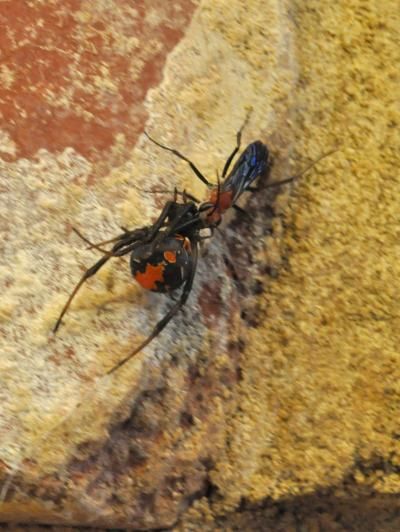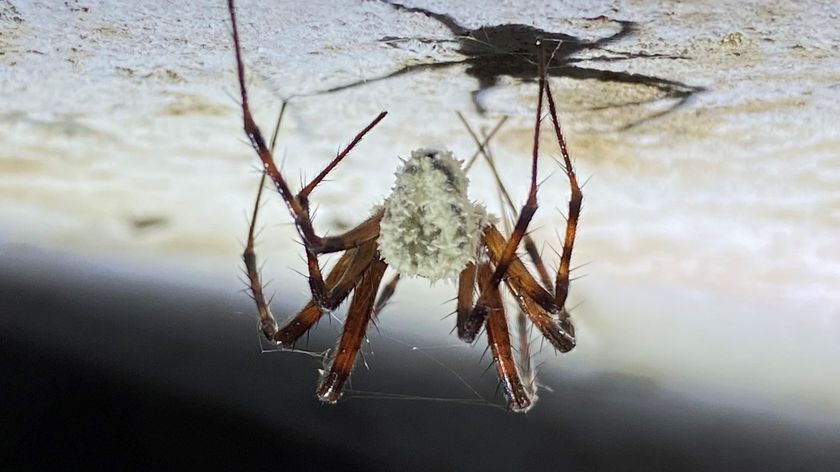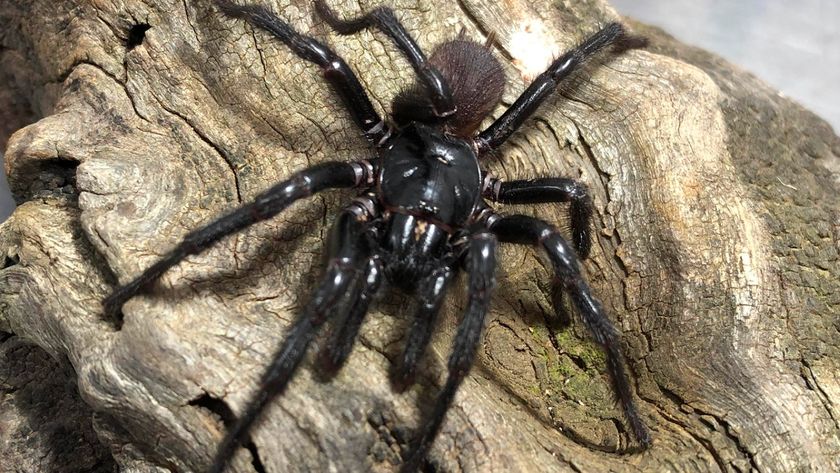
Killer Spider Meets Its Match in Tiny Wasp

Throughout Australia, a tiny wasp stings and paralyzes redback spiders before laying an egg that develops into a larva and slowly devours the dangerous arachnids, Australian researchers have announced.
The find is good news for Australians watching out for the redbacks, a type of spider whose bite can potentially be lethal.
The wasp was first described scientifically in 1775 by a Danish entomologist, thanks to samples collected in 1768 in Australia by Captain James Cook. But since then, "scientists have largely forgotten about the wasp," said professor Andy Austin, a researcher at Australia's University of Adelaide, in a statement.
That was until a couple years ago, when Florian Irwin, age 9, spotted a tiny wasp dragging a redback spider back to its nest in the boy's backyard in Beaconsfield, Western Australia. His father, Peter Irwin, a lecturer of veterinary medicine at Murdoch University, photographed the site and took samples of the animals, which made their way to Austin.
Previously known only by its Latin name, Agenioideus nigricornis, it's now known as the redback spider-hunting wasp.
"We're very excited by this discovery, which has prompted us to study this species of wasp more closely," Austin said. "It's the first record of a wasp preying on redback spiders, and it contributes greatly to our understanding of how these wasps behave in Australia." His findings are detailed in the September issue of the Australian Journal of Entomology.
Redback spiders are closely related to black widows. Although not quite as venomous as their North American relatives, redbacks can inflict a nasty bite on humans that in rare instances may be deadly, according to the Australian Museum. Bites can cause severe pain, sweating, weakness and vomiting. More than 250 people bitten each year in Australia receive antivenom.
Sign up for the Live Science daily newsletter now
Get the world’s most fascinating discoveries delivered straight to your inbox.
Redback spiders, which live around humans, have spread to Japan and New Zealand, and the wasps perhaps could be introduced there to reduce the spider's populations.
Reach Douglas Main at dmain@techmedianetwork.com. Follow him on Twitter @Douglas_Main. Follow OurAmazingPlanet on Twitter @OAPlanet. We're also on Facebook and Google+.
Most Popular




